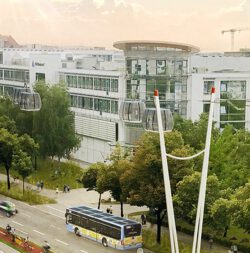What is quite normal in other countries is still at its beginning in Germany: Cable Cars, integrated in local public transport. But that is about to change. In some German cities, the concept is increasingly being considered: Munich is considering building a cable car several kilometers long in the north of the city, Bonn is looking into the possibility of crossing the Rhine by cable car, and Berlin wants to be the first German city to fully integrate a cable car into its public transport system.
However, a cable car alone is not the solution to all traffic problems. It is about closing gaps, relieving, extending, bridging. Cities would have to carefully weigh up the pros and cons. For example, it is not possible to transport large crowds of people in a short time by cable car. And neighbors might be concerned with the cityscape.
In some major cities in South America, however, the cable cars have long been a natural part of local transportation. In Bolivia’s capital La Paz, for example, there is a total of 27 kilometers of cable cars, the densest network in the world. It can be used to overcome altitude differences of up to 1,000 meters within the city.
